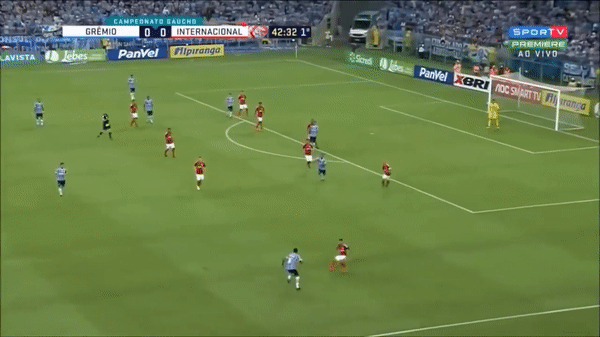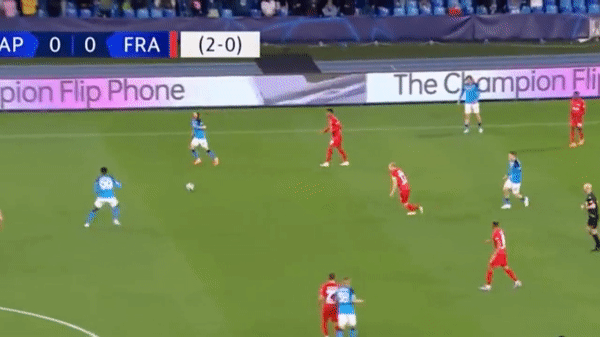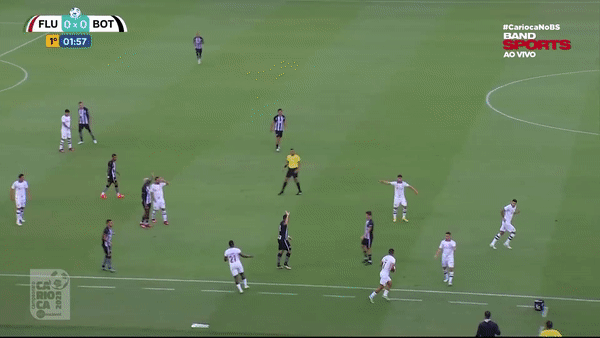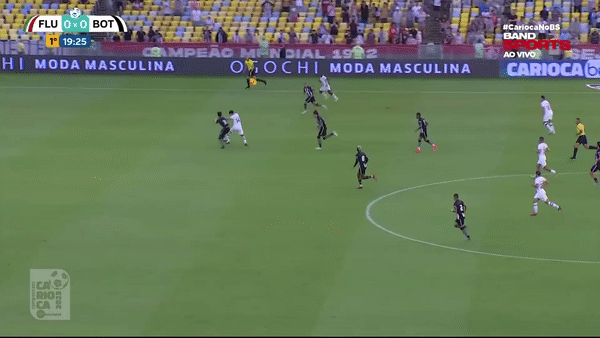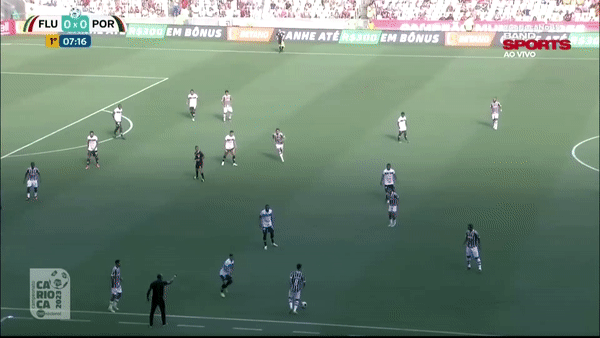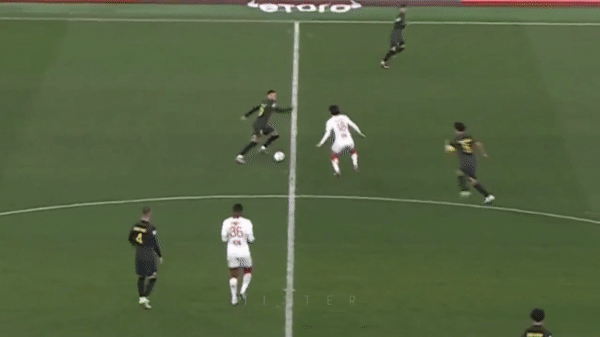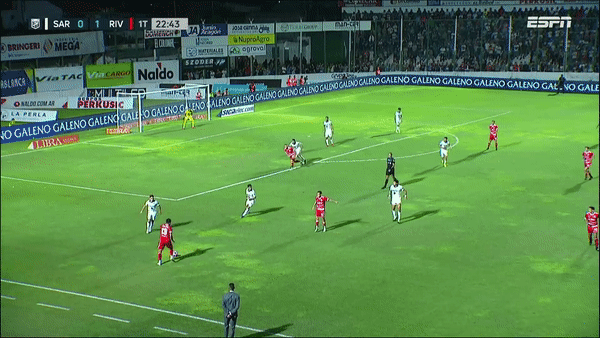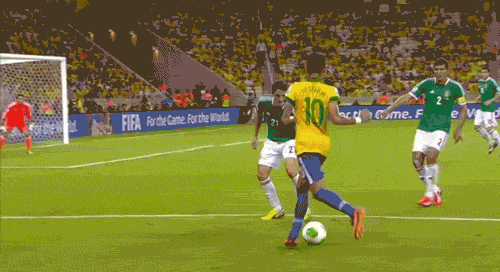1. Campfire 🔥
This principle emphasizes close player proximity around the ball carrier, fostering combinations such as toco y me voy (I play, I go), tabelas (one-twos), and escadinhas (staircases); all of which are beautifully explained in this article by Jamie Hamilton.
By gathering around the ball, players create conditions for relational play to emerge. This setup maximizes opportunities for progressive play while maintaining compactness for defensive transitions.
2. Tilt the Table ⚖️
This principle involves overloading one side of the pitch to "tilt" the attack in a particular direction. The concentration of players enhances interaction while also reducing vulnerability to counterattacks by facilitating quick recovery through counter-pressing.
Tilting creates natural opportunities for relationism as players collaborate closely. It also gives defenders fewer passing options when they regain possession, as they are boxed into one side of the pitch.
3. Yo-Yo 🪀
This principle is about using an opponent’s collective flow against them. Players may "fake a switch" back to the centre before returning the ball to the original tilt. On an individual level, it involves using late movements, timing, and disguise to disrupt opponents' rhythm.
Yo-yo is the tactical embodiment of relational dynamics, luring the opponent into a predictable pattern of movement and going against it. It’s about rhythm manipulation, disguised intentions & playing deceptively.
4. Decide IN the Danger ⚠️
This principle is about acting intuitively rather than letting fear dictate actions; remaining open to the opportunities for action, and not committing to one before you need to. It's akin to navigating a busy crowd — adjusting fluidly rather than taking a pre-planned route.
It highlights the importance of adaptability in Relationism, where players must perceive in order to act and act in order to perceive.
5. Walk the Dog 🐶
This principle refers to elusiveness in movement—drawing opponents out of position and responding to their reactions. It's about being untraceable and manipulating space.
Walk the Dog reflects relational dynamics by emphasizing interaction and response over fixed positioning. It demonstrates the power of subtle movements to disrupt defensive structures.
6. Hang Loose 🤙
A relaxed, rubber approach that prioritizes staying fluid and composed, even when mistakes occur. It includes concepts like corta luz (body feints and misdirection), which blends playfulness with precision.
Players who "hang loose" are more likely to take creative risks, embodying the spontaneity of Relationism. This principle fosters freedom of expression while minimizing the psychological burden of errors.
7. Spider 🕷️
This principle is about how we protect and regain possession on an individual & collective level. Players adopt a "spider-like" stance — big, balanced & wide to protect the ball under pressure. When regaining the ball, it's a choice between 'snap' or 'trap'. Snap at the ball carrier to force a turnover or to force their decision vs. Trap the ball carrier & their support in situations where turnover is more likely. Pressing is both strategic and aggressive but opportunistic; waiting to smother opponents in pressing traps.
The Spider principle combines defensive organisation with opportunistic pressing. It aligns with Relationism by focusing on collective anticipation and interaction.
